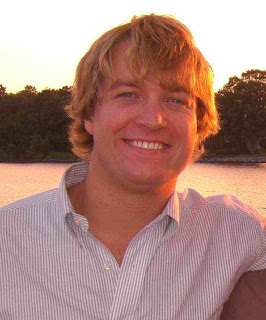
Durban was originally founded by British settlers and accordingly the town evinces a distinctly British feeling as opposed to the Dutch/Afrikaans influence elsewhere. This influence can be seen in the architecture (see the photo of Durban's city hall above) and heard in the locals accents. The British also brought in many Indians as indentured servants in the 1860s and many of their descends still live in the area.

Ellie had been giddy about getting to Durban since Zambia because two of her friends from Peace Corps, Jamaica were in the area. We met up with Nathan, Justin and a few of Justin's friends and enjoyed a weekend checking out Durban's beach and nightlife. We did manage to see a few sights other than the beach, namely City Hall (see the first photo), and the Botanical Gardens (pictured below).

From Durban, Ellie, Nathan, Suzanne, and I hopped on a minibus headed to Underberg, a small town in the Drakensberg mountains. Although Underberg is not the best place to see the Drakensberg it is the best place to get into Lesotho, the small country entirely inside South Africa and that was our priority. Still, we enjoyed a day hike through the Drakensberg and stopped for lunch at a freezing cold swimming hole.


The next morning Nathan, Ellie and I woke up early to start a two day trip into Lesotho. Unfortunately Suzanne forgot her passport and couldn't come.
Lesotho (pronounced le-soo-too) is known as the Mountain Kingdom and is geographically notable for three reasons:
- It is the only country to lie entirely above 1,000 meters
- It has the highest "lowest elevation" of any country
- It is an enclave, a country lying wholly within the boundaries of another country

We left Underberg in a car and climbed nearly 2,000 meters up the notoriously bad Sani Pass to the border between South Africa and Lesotho. My first impression of Lesotho was that it is charmingly anachronistic, much like Tibet. Most of the Basotho (people from Lesotho) are subsistence farmers or tend to sheep, goats or cows and live in rondavels (traditional African huts, pictured below).

We climbed up and up the pass and the road leveled off at the border. Where most passes go up on one side and down on the other, this one is up on one side and flat on the other. Lesotho is seemingly a plateau or butte perched high above South Africa.
 The five hour drive from our hotel in Underberg to Lesotho gave us a great opportunity to chat with the three Brits, Tom, Sophie, and Tamsyn, who were on the same tour. We stopped off at a rondavel where we dropped off our bags before heading out to explore the town on foot.
The five hour drive from our hotel in Underberg to Lesotho gave us a great opportunity to chat with the three Brits, Tom, Sophie, and Tamsyn, who were on the same tour. We stopped off at a rondavel where we dropped off our bags before heading out to explore the town on foot.
Our first stop was a traditional healer who channeled my ancestors and read my future using an empty soda bottle and a candle. Next we stopped off in another rondavel to watch a traditional song and dance act before heading back for dinner. The stars that evening were spectacular, between the elevation and distance from electric lights, I don't think I've ever seen the night sky so clearly.

The next morning we walked to a nearby school where there were too many children and not nearly enough teachers or space. Fortunately they all seemed happy and were excited to pose for a picture.


The day before we had arranged to go horseback riding and our guide brought horses to the school. I named my horse Panther, hoping for a lightning quick steed. About halfway through the ride I renamed him Piggy since he seemed more intent on eating than moving.

After a few hours we galloped confidently back to camp where we ate lunch with the host family.

On the way out we stopped for a drink at the Sani Pass, home to the highest pub in Africa.

One of Lesotho's main exports is mohair, the wool from Angora goats. We stopped at a small building where people sheer goats - of course I had to try.

Finally, the last goat photo opp:

In case you can't tell, we're boxing.
Photo credit: Nathan Muzos


No comments:
Post a Comment